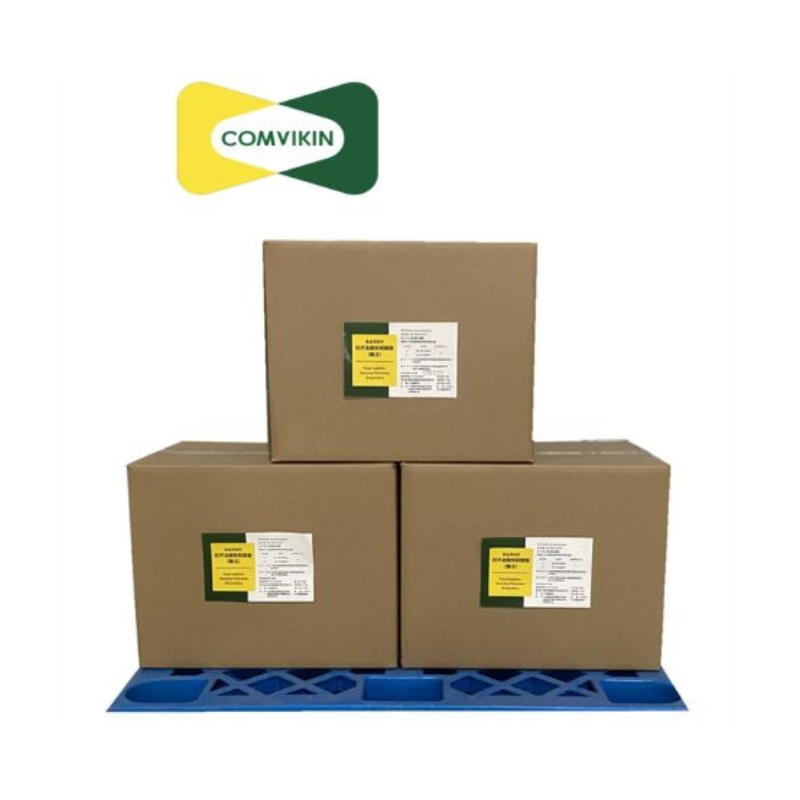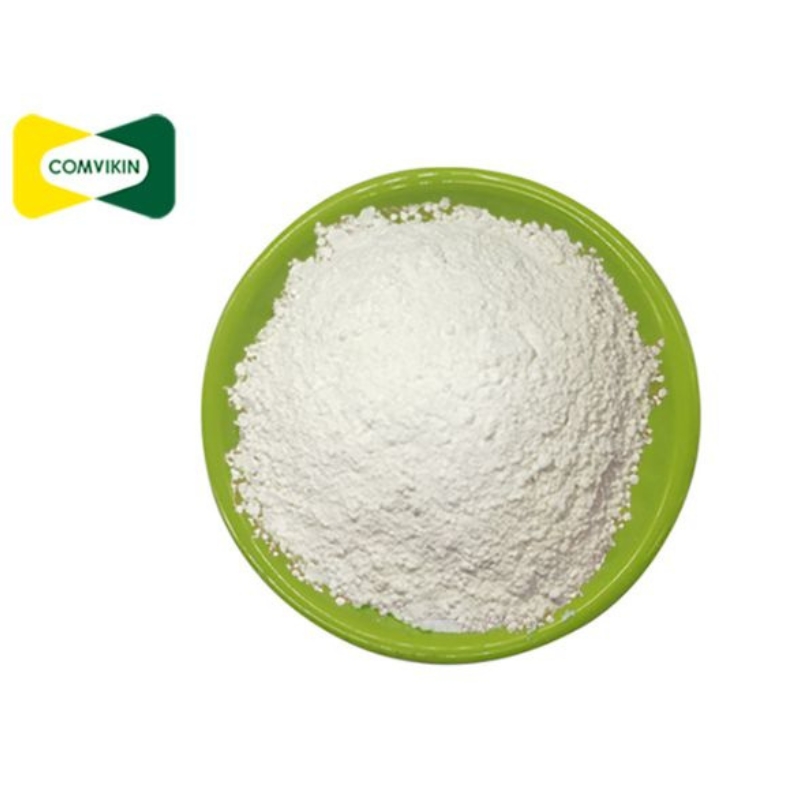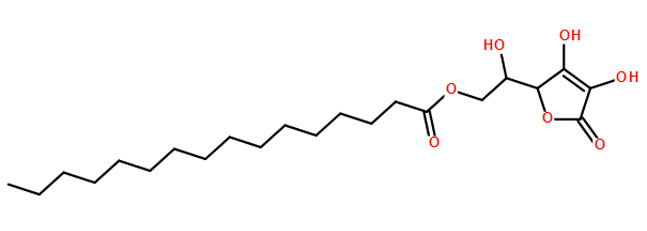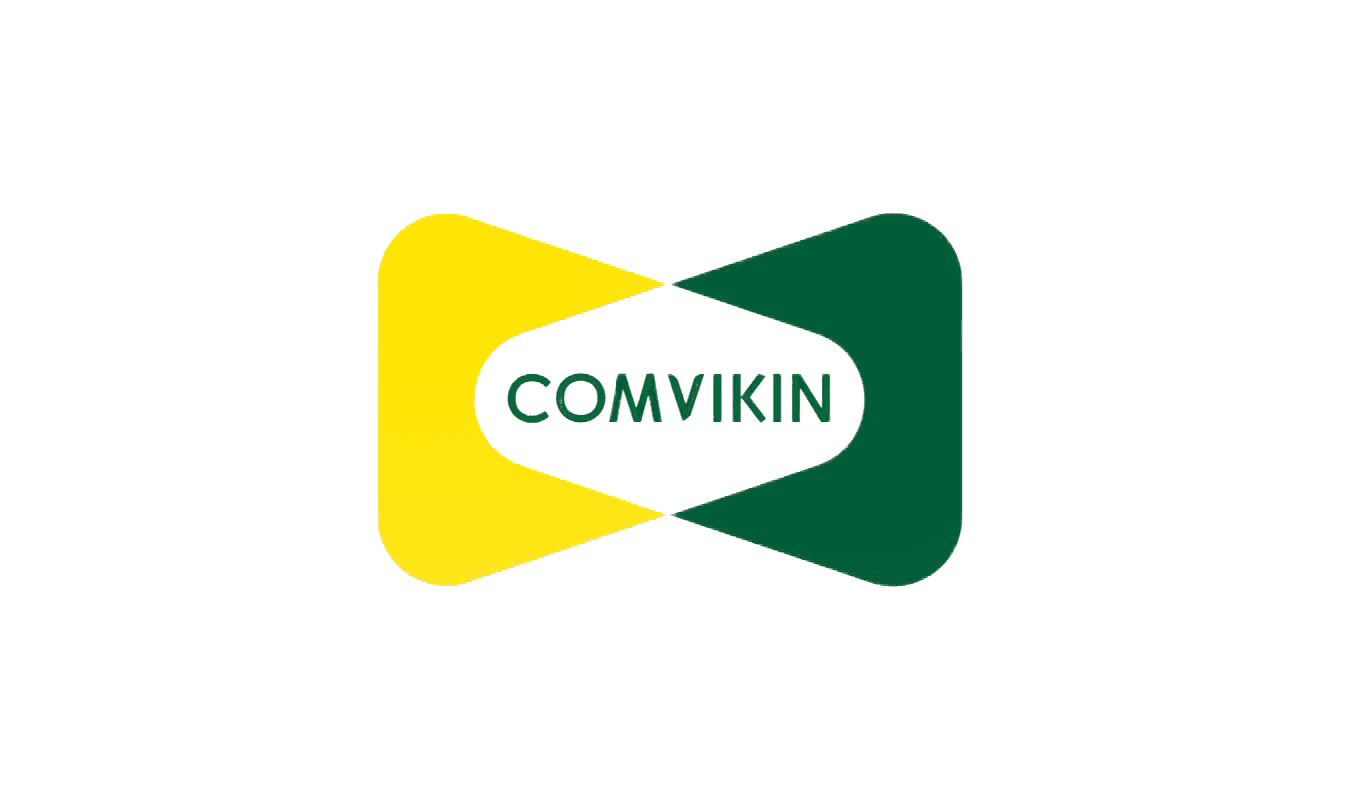


Vatimin C Palmitate
-
Chemical Name:Ascorbyl Palmitate
-
Molecular Formula:C22H38O7
-
CAS No.: 137-66-6
-
Content: ≥ 95%—99%
-
Scope of use: (see GB 2760 the supplement of previous years for details)
-
Package specification:500g / bag, 10kg / carton , 25kgs/Barrel
-
Storage conditions:Keep in a cool dry place. Do mix with toxic substances.
-
Validity period: 24 months


Properties
Reviews
Ascorbyl Palmitate Properties
| Melting point | 115-118 °C(lit.) |
|---|---|
| alpha | +21~+26°(20℃/D, c=2, C2H5OH) |
| Boiling point | 512.7±50.0 °C(Predicted) |
| Density | 1.150±0.06 g/cm3(Predicted) |
| refractive index | 22.5 ° (C=1, EtOH) |
| storage temp. | 2-8°C |
| solubility | Slightly soluble in ethyl alcohol. |
| pka | 3.96±0.10(Predicted) |
| color | White to Pale Gray |
| Odor | wh. or yel.-wh. powd., citrus odor |
| optical activity | [α]20/D +23±1°, c = 1% in ethanol |
Ascorbyl Palmitate Chemical Properties,Uses,Production
Description
Ascorbyl palmitate is a lipophilic derivative of ascorbic acid with antioxidant and antiproliferative activities. It scavenges hydroxyl radicals in cell-free assays. Ascorbyl palmitate (0.01%) reduces the rate of autoxidation of soybean, safflower, sunflower, peanut, and corn oil. It inhibits increases in epidermal ornithine decarboxylase activity and DNA synthesis induced by phorbol 12-myristate 13-acetate (TPA; ) in mice in a concentration-dependent manner when applied topically. Ascorbyl palmitate (0.8 and 4 μmol per 200 μl of acetone, applied topically) reduces the number of tumors per mouse and the percentage of mice with tumors in a mouse skin two-stage model of tumor formation initiated and promoted by 7,12-dimethylbenz[a]anthracene (DMBA) and TPA, respectively. Formulations containing ascorbyl palmitate have been used as antioxidants and preservatives in foods, pharmaceuticals, and cosmetics.
Chemical Properties
Ascorbyl palmitate is a white or yellowish-white solid with a soapy taste and a citrus-like odor. It is very slightly soluble in water but freely soluble in alcohol, animal oil, and vegetable oil. It melts at 107° to 117°C (around 234°F). Ascorbyl palmitate prevents oxidative rancidity development by quenching singlet oxygen. The ascorbic acid part of the molecule donates hydrogen (a reducing agent). This phenomenon is also called "oxygen scavenging".
Recommended for Products
Food industry as a natural preservative for oils, vitamins and colors, cosmetics industry
Production Methods
Comvikin, as a leading ascorbyl palmitate manufacturer, has self-developed ester enzymatic synthesis process technology platform (with 16 patents and more than 100 technical secrets), realizing the environmentally friendly production of ascorbyl palmitate, and becoming an influential global food antioxidant manufacturer.
About China Ascorbyl Palmitate, Vatinmin C derivative, Vitamin C Palmitate
China is a leading producer of Vitamin C Ascorbyl Palmitate, a high-quality derivative of Vitamin C renowned for its stability and versatility. Also known as Vitamin C Ester, Ascorbyl Palmitate is created by bonding Vitamin C with palmitic acid, resulting in an oil-soluble and nonacidic form that is significantly more stable than the water-soluble L-Ascorbic Acid. This enhanced stability makes it ideal for formulations where oxidation, a common issue with L-Ascorbic Acid, can lead to product discoloration or degradation.

